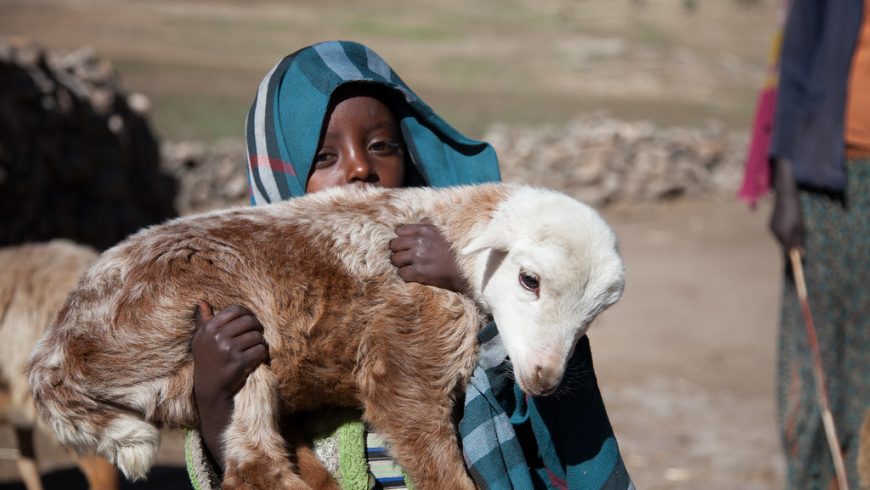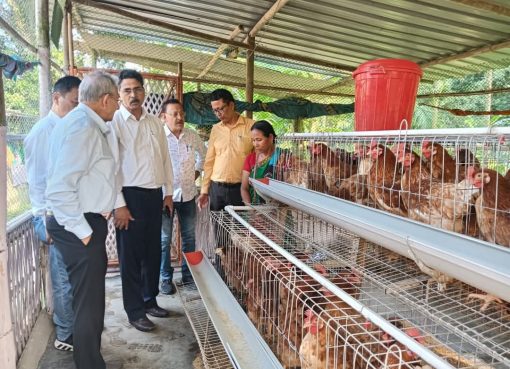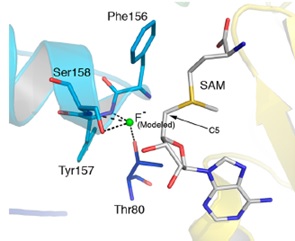Dr. Prerona Patowary1, Dr. Dipak Bhuyan2 and Dr. Manoj Kr. Kalita3
1Scientist, AAU-Goat Research Station, Burnihat, Assam-23
2Chief Scientist, AAU-Goat Research Station, Burnihat, Assam-23
3Assistant Professor, LCVSc, AAU, Joyhing, North Lakhimpur, Assam-51
Email: preronapatowary@gmail.com
Diseases which are inter-transmissible between man and animals are called Zoonoses. Rudolf Virchow Coined the term “Zoonoses” stating that “Between animal and human medicine, there is no dividing line, nor should there be. The object is different, but the experience gained constitutes the basis of all medicine”.
Importance of the zoonotic diseases
At least 71% of all human pathogens are zoonotic and about 75% of all emerging human pathogens over the past 10 years have been caused by pathogens originating from an animal or from products of animal origin (Rodolakis, 2014).
Major Zoonotic diseases of small ruminant origin
Zoonotic diseases, originating from small ruminants, represent a significant public health concern due to their potential for transmission to humans. Many zoonoses identified in sheep and goats are contracted through close contact, predominantly affecting individuals in specific occupational settings, such as breeders, veterinarians, and slaughterhouse workers. Other zoonoses can spread via airborne transmission, posing a risk to populations residing near sheep and goat farms. In industrialized or developed nations, where small ruminants are among the few animals that still engage in migratory practices, there is a heightened risk of disease transmission. Additionally, zoonotic diseases can be foodborne, transmitted to humans and other animals via contaminated food and water sources. Emerging challenges, such as climate change, are altering the distribution and competency of disease vectors, while human behavior related to food consumption, processing, and animal management may further exacerbate the risk of zoonotic disease outbreaks in the future.
Zoonotic diseases originating from small ruminants (sheep and goats) in India are a significant public health concern due to the country’s large population of small ruminants and the close interaction between humans and animals, particularly in rural areas. Some key zoonotic diseases associated with small ruminants in India are enlisted below –
- Brucellosis
- Prevalence: Brucellosis is one of the most widespread zoonotic diseases in India, particularly affecting sheep, goats, and cattle. In small ruminants, Brucella melitensis is the primary pathogen.
- Human Impact: Brucellosis poses serious health risks to humans, including fever, joint pain, and long-term complications. It is transmitted through direct contact with infected animals or consumption of unpasteurized milk and milk products.
- Prevalence in Animals: Studies have shown seroprevalence rates in goats and sheep ranging from 3% to 12% in various regions of India, particularly in northern and central parts of the country.
- Occupational Risk: Farmers, veterinarians, and slaughterhouse workers are at increased risk due to close animal contact.
- Q Fever (Coxiellosis)
- Prevalence: Q fever, caused by Coxiella burnetii, is a significant zoonosis affecting small ruminants in India, especially in the arid and semi-arid regions.
- Transmission: It is transmitted to humans through inhalation of contaminated aerosols from animal birth products, feces, urine, and milk.
- Human Impact: The disease can cause flu-like symptoms and, in some cases, pneumonia or hepatitis. Chronic Q fever can lead to endocarditis in humans.
- Prevalence in Animals: Limited studies indicate a prevalence of burnetii in sheep and goats ranging between 5% and 20% in various regions, though underreporting is common due to lack of surveillance.
- Orf (Contagious Ecthyma)
- Prevalence: Orf, a viral zoonotic disease caused by the Parapoxvirus, is common in small ruminants in India, particularly in areas with dense sheep and goat populations.
- Transmission: The virus spreads through direct contact with lesions or contaminated materials.
- Human Impact: Humans can develop painful pustular lesions, particularly on the hands, when handling infected animals or animal products.
- Outbreaks: Orf outbreaks are commonly reported in rural areas where small ruminants are kept in close quarters, with seasonal patterns aligning with lambing or kidding seasons.
- Anthrax
- Prevalence: Anthrax is endemic in certain parts of India, particularly in the states of Andhra Pradesh, Tamil Nadu, Karnataka, and Odisha.
- Transmission: The disease is caused by Bacillus anthracis and is primarily transmitted through contact with infected animals or animal products, such as hides or wool.
- Human Impact: Anthrax can be fatal if not treated and manifests in cutaneous, gastrointestinal, or pulmonary forms in humans.
- Outbreaks: Sporadic outbreaks in small ruminants have been reported, particularly during monsoon seasons when soil conditions promote spore survival.
- Cryptosporidiosis
- Prevalence: Cryptosporidiosis is caused by the protozoan Cryptosporidium and is a significant cause of diarrhea in small ruminants and humans, especially children.
- Transmission: The disease spreads via fecal-oral transmission, often through contaminated water or food, and is common in both rural and urban settings.
- Prevalence in Animals: Studies in various Indian states indicate a prevalence of Cryptosporidium infections in small ruminants ranging from 7% to 18%.
- Toxoplasmosis
- Prevalence: Toxoplasmosis, caused by Toxoplasma gondii, is commonly found in small ruminants in India, especially in goats.
- Transmission: Humans can contract toxoplasmosis by consuming undercooked meat or contaminated food and water. The disease is a particular risk for pregnant women, as it can lead to miscarriage or birth defects.
- Prevalence in Animals: Seroprevalence studies have shown rates of gondii antibodies in small ruminants ranging from 10% to 30% in various parts of India.
- Leptospirosis
- Prevalence: Leptospirosis, caused by the Leptospira, is another zoonotic disease linked to small ruminants, although it is more frequently associated with cattle and swine.
- Transmission: The disease spreads through contact with urine-contaminated water or soil.
- Human Impact: Leptospirosis can cause flu-like symptoms, liver damage, kidney failure, and, in severe cases, death.
- Prevalence in Animals: Serological studies have reported prevalence rates of 5% to 15% in small ruminants in states like Tamil Nadu and Kerala.
- Campylobacteriosis
- Prevalence: Campylobacteriosis, caused by Campylobacter jejuni and coli, is a foodborne zoonosis frequently associated with small ruminants.
- Transmission: The pathogen is transmitted through the consumption of contaminated meat, milk, or water.
- Human Impact: Campylobacteriosis causes gastrointestinal illness in humans, including diarrhea and abdominal pain, and may lead to more severe complications in immuno-compromised individuals.
- Prevalence in Animals: Studies in various parts of India have found a prevalence of Campylobacter in 7% to 25% of sheep and goats.
Mitigation strategies for to minimize zoonotic risks:
Minimizing zoonotic risks from small ruminants is essential to protect public health, ensure animal welfare, and sustain agricultural productivity. Effective mitigation strategies involve a combination of veterinary, public health, environmental, and educational interventions. Here are some key strategies to minimize zoonotic risks in small ruminants:
- Improved Biosecurity Measures
- Quarantine and Isolation: New or sick animals should be isolated from the herd to prevent the spread of infectious diseases. This reduces the risk of zoonotic pathogens being transmitted to humans and other animals.
- Hygiene Practices: Proper sanitation in animal housing should be encouraged, including regular cleaning and disinfection of barns, feeding equipment, and water sources.
- Pest Control: Pest control measures are needed to be implemented to limit the exposure of small ruminants to vectors like ticks, mosquitoes, and flies, which can transmit zoonotic diseases such as Rift Valley fever and Japanese encephalitis.
- Vaccination Programs
- Animal Vaccination: Regular vaccination of small ruminants against common zoonotic diseases (g., brucellosis, anthrax, Q fever) is a critical preventive measure. Government-supported vaccination campaigns can help reduce the prevalence of these diseases in livestock and their transmission to humans.
- Human Vaccination: In high-risk areas or populations (e.g., farmers, veterinarians, abattoir workers), vaccinating individuals against zoonoses, where available, can reduce the likelihood of infection (g., anthrax vaccines for humans).
- Disease Surveillance and Early Detection
- Routine Monitoring: Regular health check-ups for small ruminants should be implemented to detect and manage zoonotic infections early. Animal health authorities should encourage the reporting of suspected cases of zoonoses and follow up with appropriate interventions.
- Diagnostic Tools: The capacity of laboratories should be strengthened to diagnose zoonotic diseases accurately and quickly. Surveillance systems that track disease outbreaks in both humans and animals can help contain the spread of infections.
- Safe Handling and Processing of Animal Products
- Milk Pasteurization: Pasteurization of milk and dairy products from small ruminants needs to be promoted to eliminate pathogens like Brucella, Campylobacter, and Listeria, which are often present in raw milk.
- Meat Inspection: It is important to ensure proper inspection and processing of meat from small ruminants at slaughterhouses to reduce the risk of foodborne zoonotic diseases. Strict hygiene standards should be maintained throughout the supply chain.
- Waste Management: Animal waste and by-products, such as placenta or aborted fetuses, safely to prevent environmental contamination and human exposure to pathogens.
- Vector Control and Environmental Management
- Vector Control: Measures should be implemented to reduce the presence of disease-carrying vectors, such as ticks and mosquitoes, in and around farms. This can include the use of insecticides, repellents, and environmental modifications like removing stagnant water.
- Grazing and Watering Practices: Grazing areas and watering points should be propely managed to avoid contamination by fecal material, which can harbor zoonotic pathogens like Cryptosporidium and
- Education and Training
- Farmer and Worker Education: Farmers, animal handlers, and slaughterhouse workers need to be educated on zoonotic disease risks and best practices for handling animals and animal products safely. This can include workshops on biosecurity, personal hygiene, and protective measures.
- Public Awareness Campaigns: Public health campaigns need to be run to raise awareness about zoonotic diseases, particularly in rural areas. Information on food safety, personal hygiene, and the importance of vaccinations can help reduce transmission.
- Personal Protective Equipment (PPE): Use of appropriate PPE (g., gloves, masks, boots) by individuals working closely with small ruminants should be encouraged to minimize direct exposure to zoonotic pathogens.
- Antimicrobial Stewardship
- Judicious Use of Antibiotics: It is needed to ensure implementation and enforcement of guidelines for the responsible use of antibiotics in small ruminant farming to prevent the development and spread of antibiotic-resistant zoonotic pathogens.
- Alternatives to Antibiotics: Use of alternatives, such as probiotics or vaccines, should be encouraged to manage diseases in small ruminants and reduce reliance on antimicrobial treatments.
- Integrated One Health Approach
- Collaboration between Sectors: It is needed to foster collaboration between veterinary, medical, and environmental professionals to implement an integrated One Health approach. This promotes the monitoring and control of zoonoses across human, animal, and environmental health sectors.
- Research and Development: Research initiatives aimed at understanding zoonotic diseases in small ruminants, including emerging pathogens, disease transmission mechanisms, and effective control measures are needed to be promoted.
- Climate Change Adaptation
- Adaptation Strategies: The impact of climate change on the distribution and abundance of vectors and zoonotic diseases should be recognized. Farming practices suitable to minimize risk, such as modifying grazing patterns or improving water management systems may be adapted.
- Climate-Resilient Infrastructure: Investment should be encouraged in resilient animal housing and waste management systems that can withstand the changing environmental conditions that may favor the spread of zoonotic pathogens.
- Strengthening Policy and Regulation
- Enforcement of Zoonotic Disease Control Programs: Governments should implement strict regulations for disease control, animal trade, and movement, with a focus on zoonotic diseases. Enforcement of quarantine measures, animal health certificates, and biosecurity regulations is essential.
- Zoonosis Control in Food Systems: Regulation and monitoring of the food industry is essential to ensure compliance with food safety standards, particularly concerning animal-derived products from small ruminants.
Zoonotic diseases from small ruminants in India pose significant health risks, particularly in rural areas where people are in close contact with animals. Limited surveillance, under reporting, and lack of effective control measures contribute to the persistence of these diseases. Improved diagnostics, vaccination programs, and public health initiatives are necessary to mitigate the spread of zoonoses from small ruminants to humans in India.
References
Bonsu, G., Kazwala, R. and Brown, J. (2021). Climate change and vector-borne zoonotic diseases. Journal of Climate Health, 5(2): 89-99.
Mollentze, N. and Streicker, D.G. (2020). Viral zoonotic risk is homogenous among taxonomic orders of mammalian and avian reservoir hosts. Proceedings of the National Academy of Sciences, 117(17): 9423-9430.
Rodolakis, A. (2014). Q fever in sheep and goats. Small Ruminant Research, 118(1): 1-9.
Singh, B.B. and Gajadhar, A.A. (2014). Role of India’s livestock in zoonotic disease emergence. Indian Journal of Animal Sciences, 84(11): 1221-1228.
Wolfe, N.D., Dunavan, C.P. and Diamond, J. (2007). Origins of major human infectious diseases. Nature, 447(7142): 279-283.




